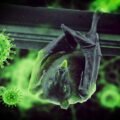New research has shown that the human mind seems to enter into a creative “sweet spot” right before passing into deep sleep. Previous studies had found possible connections between deeper forms of sleep and mental well-being, but this latest effort is the first to take a close look at this pre-sleep “twilight zone,” and it’s seemingly multiplying effects on creativity.
BACKGROUND: SLEEP AND MENTAL ACUITY
Over the years, researchers have looked at the role of sleep on overall health. Some of these studies have zeroed in on the role of sleep and the ability to solve complex problems, along with possible benefits to other mental capabilities. However, nearly all have focused on either Rapid Eye Movement (REM) sleep or deep wave sleep.
Now, a research team from the Paris Brain Institute in France has taken a look at the shallower sleep zone that precedes these deeper states, and found this phase may be just as important as deep sleep, especially for creative thinking.
ANALYSIS: CREATIVE SWEET SPOT EMERGES
“The ability to think creatively is paramount to facing new challenges, but how creativity arises remains mysterious,” explains the study published in the journal Science. “Here, we show that the brain activity common to the twilight zone between sleep and wakefulness (non rapid eye movement sleep stage 1 or N1) ignites creative sparks.”
Specifically, the researchers tasked a group of participants with solving a complex math problem, while also making sure the problem had a simple “hidden rule” that would lead to its solution. researchers also confirmed that he study participants were previously unaware of this hidden rule.
After being presented with the problem, each study participant was then instructed to go to sleep. All were allowed to enter this N1 light-sleep zone, then each was awakened by researchers before falling into a deeper sleep. As the team had hoped, this brief time in the “twilight zone,” sometimes as little as 15 seconds, produced amazing results.
“We found that spending at least 15 s in N1 during a resting period tripled the chance to discover the hidden rule (83% versus 30% when participants remained awake)” the study explains. Perhaps surprisingly, they also found that this benefit completely vanished if the patient was allowed to drop into a deeper sleep.
OUTLOOK: AN AGE OLD TRICK PROVEN TRUE
In the press release announcing these impressive results, the team notes that allowing the mind to briefly drift into sleep to tap into deeper creativity is a historically well-known practice, one most notably used by Thomas Edison and Salvador Dali. However, until now, it had not been explored by science, much less proven as a likely benefit.
“Our findings suggest that there is a creative sweet spot within the sleep-onset period,” the study abstract concludes, “and hitting it requires individuals balancing falling asleep easily against falling asleep too deeply.”
Yawn.
Wait…was I still typing?
Follow and connect with author Christopher Plain on Twitter: @plain_fiction
